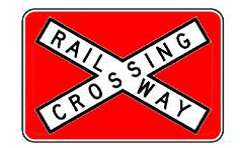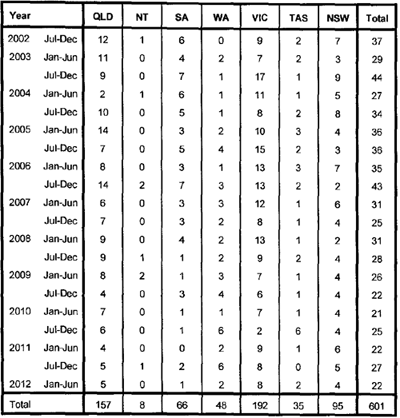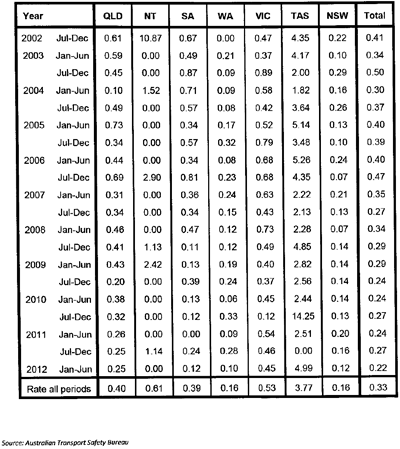Record of Investigation Into Death (Without Inquest)
Corners Act 1995
Coroners Rules 2006
Rule 11
I, Donald John Jones, having investigated the death of
Robert John Joblin
I have decided not to hold an inquest into the death because the investigation into the death has sufficiently disclosed the identity of the deceased person, the time, place, cause of death, relevant circumstances concerning the death and the particulars needed to register the death under the Births, Deaths and Marriages Registration Act.
Having conducted an investigation I do not consider that the holding of an inquest would elicit any information further to that disclosed by the enquiries conducted.
Find That:
Robert John JOBLIN died on 5 May 2012 at Wilmores Lane, Longford.
Robert John JOBLIN was born in Brisbane, Queensland on the 18th October 1943 and was aged 68 years.
Robert John JOBLIN was never married and was a retired Computer Programmer and is survived by two sisters living on the Mainland at the time of his death.
The deceased died as a result of haemorrhagic shock due to a tear in the heart with Haemopericardium left Haemothorax/Pulmonary Haemorrhage following a collision with a train.
CIRCUMSTANCES SURROUNDING THE DEATH:
Robert John JOBLIN resided at 25 Lochiel Drive, Miena, Tasmania where he had resided since 2007 since relocating from Curtin in the Australian Capital Territory.
Robert John JOBLIN had returned to Tasmania on the 4th of May 2012 from a fishing trip to Christmas Island.
On Saturday the 5th of May 2012 at about 13:20hrs Robert John JOBLIN was driving a white 2002 Toyota Hilux dual cab utility registration number FC2516 which was registered in his name on Wilmores Lane, Longford.
Wilmores Lane is a secondary road and commences at Cressy Road, Longford and travels west to intersect with Bishopsbourne Road, Bishopsbourne. The speed limit for this road is 100 km/h. East of Bishopsbourne Road there is a railway crossing. Approximately 200 metres east of the crossing on the approach side from Longford there is a warning sign displayed warning “STOP”. This is followed by “RAIL X” painted on the roadway in white paint and is 180 metres from the crossing. Another sign consisting of white crossed arms with “RAILWAY CROSSING” in black lettering is above a regulatory “STOP” sign which in turn is above a sign with “LOOK FOR TRAINS”, also in black lettering, and is situated between the holding line and the rail line, approximately 4 metres from the rail line and 2 metres from the road edge. The rail line and the road intersect at approximately 35 degrees.
Following a previous incident at this crossing on the 15th March 2012 an audit was undertaken of this crossing at which time it was noted that the “Railway Crossing Ahead” sign was missing.
The relevant Australian Standard, AS1742, Part 7: Railway Crossings, gives advice on the arrangement of signs and markings at level crossings. It requires two warning signs to be provided on the approach to a level crossing controlled with a Stop sign – a ‘Railway Crossing Ahead’ advance warning sign (which has the picture of a train) and a ‘Stop sign Ahead’ warning sign.
As a result of discovering the sign missing, a replacement sign was issued to the Northern Midlands Council, however this sign had not been erected at the time of the fatal crash; it was errected a shortime later.
An eye witness, Jeffrey Ian CARINS, had entered Wilmores Lane from Bishopsbourne Road, observed the approaching train travelling north, and stopped on the western side of the train line facing east. Mr Carins first saw the Toyota ute being driven by Robert John JOBLIN approximately 300 metres from the railway crossing. Mr Carins believed the ute was not travelling fast and formed a view that it was going to stop. Mr Carins stated that as the ute got closer to the railway lines he realised that the driver was not going to be able to stop and that the train was going to reach the crossing at the same time. Mr Carins observed the ute brake and skid at the last moment onto the track with the front of the vehicle sliding to the left. Mr Carins saw Robert John JOBLIN look left towards the train and believed that he was trying to change gear to reverse off the train line. Mr Carins then observed the train collide with the front of the ute.
Mr Carins observed the wheels of the ute in the air and the vehicle spin in a clockwise motion and saw that the ute had come to a stop. Mr Carins called triple 0, waited for the train to stop, and went to check the driver, who has since been identified as Robert John JOBLIN, and found him to be deceased.
The train was made up of 4 locomotives, 2 of which were not powered up. The lead locomotive was an MKA 2000 series number 2134 owned by Tasrail and is rated at 1800 horse power. The train was pulling 26 flat bed wagons, 16 were loaded, 8 at the rear were unloaded. At the time of the collision the locomotive as travelling at 48 kph approximately. This had been ascertained from the locomotive data logger maintained in the locomotive which showed the train travelling at a speed of 48 kph at a point 485 metres from the stopping point of the train, which was approximately 220 metres from the point of impact. It was 264 metres north of Wilmores Lane when it came to a complete stop.
The driver of the train was Karen Davidson BRODIE. Ms Brodie qualified as a train driver with Queensland Rail in 2010. She was at the time of the accident undertaking a route familiarisation with qualified train driver, Shane Anthony GURR. Under normal conditions there would be a single driver only. Ms Brodie had collected the train from Western Juntion, driving it to Railton where she collected an east bound train, and was then continuing to Conara. Ms Brodie did not receive any physical injuries as a result of the collision.
Shane Anthony GURR, who was assisting Ms Brodie in the familiarisation, had been a train driver for 32 years and employed in Tasmania throughout that time. Mr Gurr had been providing route instruction to Ms Brodie for a period of three months and found her to be a competent locomotive driver. Mr Gurr did not sustain any physical injuries as a result of the accident.
Ms Brodie stated that on approaching the Wilmores Lane crossing she noticed a vehicle on Bishopsbourne Road which turned right onto Wilmores Lane. She applied the air horn until she noticed that the vehicle had stopped prior to the crossing. Ms Brodie stated that air horns are operated for four seconds and then sounded a second time when approaching level crossings.
Ms Brodie stated that as she approached the level crossing there was a pine plantation on her right which prevented her from observing vehicles approaching from the east. When approximately 20 metres from Wilmores Lane Ms Brodie observed a white ute on the train line which had entered from the east. The vehicle was stationary on the tracks. Ms Brodie stated that she did not see the white ute until it appeared on the tracks and from her position on the left side of the cab of the train she was unable to see into the cab of the ute. Ms Brodie believes that she may have sounded the air horn just prior to the accident. Ms Brodie braced herself for the collision and on feeling the impact she applied both brake levers to stop the train. Ms Brodie remained in the cabin of the train whilst Mr Gurr went to the accident scene.
I am satisifed that the crash was not deliberate of the deceased, and is likely to have arisen from complacency and inadvertence. I have formed this view as the evidence indicates that the brakes of the deceased’s vehicle had been applied sharply leaving a skid mark just prior to the vehicle reaching the crossing and consistent with the driver being alerted by the sounding of the train’s air horns, and the observations of the witnesses of the attempt by the deceased to reverse off the crossing.
POST MORTEM
A post mortem examination was conducted on the deceased by Forensic Pathologist, Mr Ruchira Fernando, on the 8th of May 2012.
The deceased was found to have died as a result of haemorrhagic shock due to a tear in the heart with Haemopericardium left Haemothorax/Pulmonary Haemorrhage.
TOXICOLOGY
The toxicology report showed no apparent significant toxicology.
COMMENTS & RECOMMENDATIONS:
The investigation into this crash has raised concerns as to the complacency that has developed in respect of railway crossings in Tasmania. Statistics have shown that in 2011/2012 there were 62 near misses reported by train drivers, and there were 2 reported collisions. This is an improvement from the previous year when there were 118 reported near misses, 7 actual collisions, and 2 collisions with pedestrians at crossings. Whilst it is clear complacency is one cause there is also inattentiveness on behalf of drivers of motor vehicles. During the period 2003 to 2012, over half of the crashes occurred at level crossings that already had flashing lights and warning bells installed.
In the week preceding this fatal collision there were 3 reported near misses in Tasmania, one of which involved a driver of a Mazda Wagon deliberately ignoring warning lights and bells driving though a crossing and in another, a driver of a cattle truck drove through a crossing 60-80 metres in front of an approaching train.
Unlike mainland States, Tasmania has few trains and it is obvious from the available statistics, drivers of motor vehicles have become complacent, and do not give consideration to the presence of trains generally.
There have been many crashes on level crossings on the Mainland, and the Australian Transport Safety Bureau compiled statistics as to collisions with trains on a State by State basis (Annexure 1 attached). Of great concern are those statistics in so far as they relate to Tasmania. When the figures are normalised and produced as a biannual rate as per the chart annexed hereto (Annexure 2 attached), it will be seen that the Tasmanian rate is the highest.
I would recommend that an awareness program be produced and disseminated via the media to increase the public awareness of the need to exercise caution at level crossings, perhaps with the use of figures from the Australian Transport Safety Bureau, and those statistics compiled in the report ‘A Review of Crashes at Level Crossings in Tasmania’ by the Traffic Engineering Branch, Department of Infrastructure, Energy and Resources. In the event that TasRail installs cameras on the front of their trains, the pictures and videos captured could be used by the media to highlight the risks created by drivers when approaching and crossing railway lines, and creating greater awareness of the risks of not complying with the installed signs.
The Department of Infrastructure, Energy, and Resources undertook a thorough investigation of this crash scene, and I endorse the outcome of that investigation.
I recommend that the railway crossing sign currently utilised throughout Tasmania be replaced by an alternative sign that is permitted by the Australian Standard AS1742 Part 7: Railway Crossings (R6-25), as is depicted below

'Railway Crossing’ (R6-25) sign with red background to increase conspicuity.
The replacement of the existing signs with the recommended sign would be cost-effective and would improve safety at level crossings. In arranging the replacement of signs throughout the State, priority should be given to level crossings with passive control, which without flashing lights and warning bells, rely on signs and markings to draw the attention of drivers to the presence of train crossings.
The Australia Standard, Manual of uniform traffic control devices AS1742 Part 7, Railway Crossings provides for the regulatory control and warning signs for road users approaching a railway crossing, both active control and passive control. Section 4 of the Manual sets out the various controls together with formulas to determine the placement of signs and the like, and the signs placed and road markings are in accordance with the Standard.
At this particular intersection of the railway line and Wilmores Lane the vision of both the train driver and a motor vehicle approaching from the east do not have a view of each other until a vehicle stops at the stop line prior to the crossing itself. The view is obstructed by trees that extend along the boundary railway line and West along the fence line where it abuts onto Wilmores Lane. Whilst ideally the crossing could have lights and gates installed, such a recommendation would be unjustified when considering the amount of usage of the railway track by trains, and the volume of cars crossing that intersection. In 2008/09 and 2009/10 six level crossings in Tasmania were upgraded from passive to active control of a cost of $3 million approximately. This equates to $500,000 per crossing, and the expenditure at this particular intersection could not be justified at that cost. It is acknowledged that electronic warning signs could be installed at a much cheaper cost but again, I do not consider it justified to recommend such installations. Some 13 ground level crossings were provided with advanced electronic warning signs during the same period, but these were on major roads on highways where vehicles would be travelling at a higher speed.
I acknowledged that since the crash occurred the Northern Midlands Council has replaced the sign ‘Railway Crossing Ahead’ which was missing at the time. It is also acknowledged that TasRail has commenced replacement of the railway crossing signs throughout Tasmania noting that the red background will increase the conspicuity for approaching drivers.
It is also noted that the give way sign which faced drivers approaching from the West has now been replaced by a stop sign.
I commend TasRail and the Department of Infrastructure, Energy and Resources for their alacrity in investigating the causes of the crash and taking immediate steps to improve the safety for both train drivers and drivers of motor vehicles.
Having investigated the matter I find no fault can be attributed to the train driver as it is clear that the crash has been caused by the inadvertence of Mr Joblin who has failed to comply with the warnings signs and failed to stop his vehicle as required by the stop sign.
Before I conclude this matter, I wish to convey my sincere condolences to the family of the deceased.
This matter is now concluded.
DATED: - 19 June 2013 at Burnie in the State of Tasmania
Donald John Jones
CORONER
Annexure 1
Level crossing occurences
Road vehicle collisions
Table 15: Road vehicle collisions at level crossings, biannual count by jurisdiction and year, 1 July 2002 to 30 June 2012.

Annexure 2
Table 16: Normalised road vehicle collisions at level crossings, biannual rate per million train km travelled by jurisdiction and year, 1 July 2002 to 30 June 2012.
